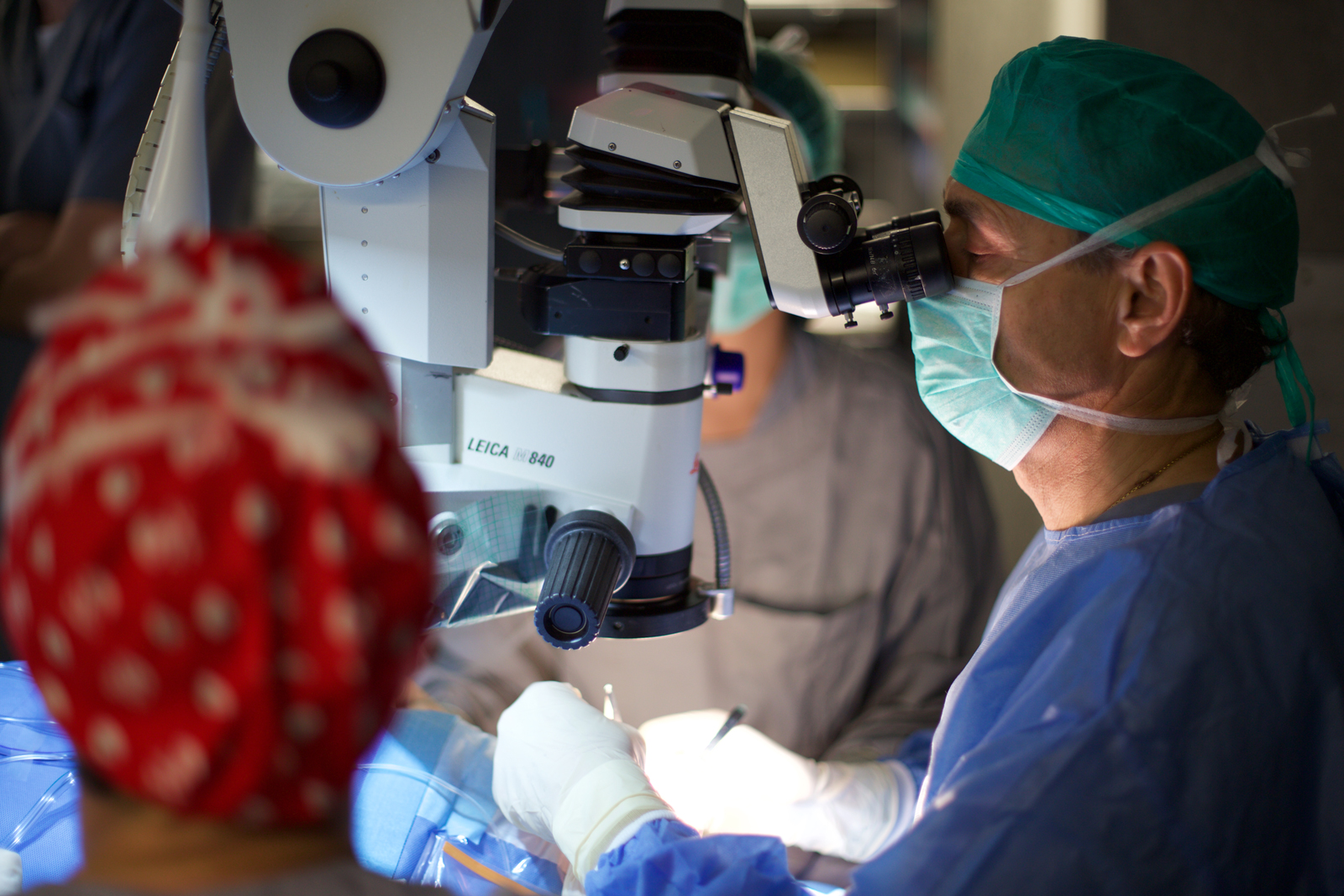New day of eye check-ups at the Casal dels Infants in Santa Coloma
09/04/2025

02/12/2020
• Unlike other materials, graphene retina enhances retinal stimulation and achieves greater visual acuity
• Expert surgeons from our Center begin one of the last experimental phases
The Barraquer Foundation, together with the Catalan Institute of Nanoscience and Nanotechnology (ICN2), the Institute of Photonic Sciences (ICFO), the Institute of High Energy Physics (IFAE) and the Institute of Vision of Paris, participates in a pioneer technologic project to implant a new artificial retina that opens the doors to restore vision to people with blindness.
The application of this new technique, which has just started one of the last experimental phases before being used in humans, could represent a real revolution in the field of ophthalmology, thanks to the use of graphene, a highly conductive material, very flexible and light.
The objective of the project, called i-VISION (Adaptive Retinal Implant Technology for Vision Restoration) and which began in 2015, is to develop a retinal prosthesis technology capable of offering high visual acuity to blind people suffering from diseases of the outer layer of the retina, such as retinitis pigmentosa, age-related macular degeneration or Stargardt's disease, among others.
In Spain there are currently more than 15,000 and 700,000 people affected by retinitis pigmentosa and macular degeneration associated with age, respectively. Although in both cases the responsible photoreceptor cells -that convert light into nerve impulses and that the brain then transforms into images- stop working, neurons that send the information to the brain remain intact.
This retinal prosthesis application system processes images from the outside through a camera that is responsible for stimulating these neurons using electrodes to recreate vision. With the techniques used so far, the ability to restore vision is quite limited, but with the use of graphene, expectations completely change.
The new device is implanted in the inner part of the retina an electrostimulator with thousands of stimulators, which are responsible to circumvent the defect in the outer retina that people with retinitis pigmentosa and degeneration of the macula have and that causes their blindness.
Unlike other materials, with which the most that was achieved is that the patient could get to see shadows, Dr. Jeroni Nadal, deputy medical director and coordinator of the Retina and Vitreous Department at the Barraquer Ophthalmology Center, says that "graphene represents a breakthrough in artificial vision, as it achieves greater stimulation of the retina and to identify and discriminate better images, so that in the future, the person would gain autonomy.
After completing the implant design, a team of surgeons from the Barraquer Ophthalmology Center, led by Dr. Jeroni Nadal, has just started the animal experimentation phase. Once completed, the next step will be to validate the device with more experiments at the Paris Vision Institute to finish outlining the technology to the last detail. All in all, it is estimated that the prosthesis will be ready to be used by the first sick people in about two years.
It is very exciting to be able to contribute our knowledge and experience to this innovative and revolutionary project in the field of artificial vision ”, says Dr. Jeroni Nadal. "Our participation in multidisciplinary research such as this is one more example of our commitment to science, innovation and, above all, the search for solutions to improve the lives of our patients," he adds.
The results obtained so far are the result of many years of research and the collaboration of scientists from different leading centers. In this sense, the preparation of the prosthesis would not have been possible without the knowledge and experience in nanomaterials, electronics and microscopy of the Catalan Institute of Nanoscience and Nanotechnology (ICN2), the Institute of Photonic Sciences (ICFO) and the Institute of Physics of High Energías (IFAE), three institutions recognized with the Severo Ochoa Award for Excellence and founding members of the Barcelona Institute of Science and Technology (BIST). Dr. Jeroni Nadal and the Institut de la Vision of the Sorbonne University (Paris) will make possible its surgical application in the human body thanks to their physiological and clinical knowledge.
The i-VISION project was awarded last year in the II edition of the La Caixa Foundation Health Research Grants. This initiative was selected from a total of 22 projects out of 632 proposals to act in areas such as oncology, infectious diseases or neuroscience.
At the Barraquer Ophthalmology Center we already have experience in the field of artificial vision through the ARGUS II project, which in 2016 allowed us to implant the first bionic eye or artificial retina and restore vision to the first three people in Spain, although with certain limitations that now, with the new system still in the experimental phase, are intended to be improved.